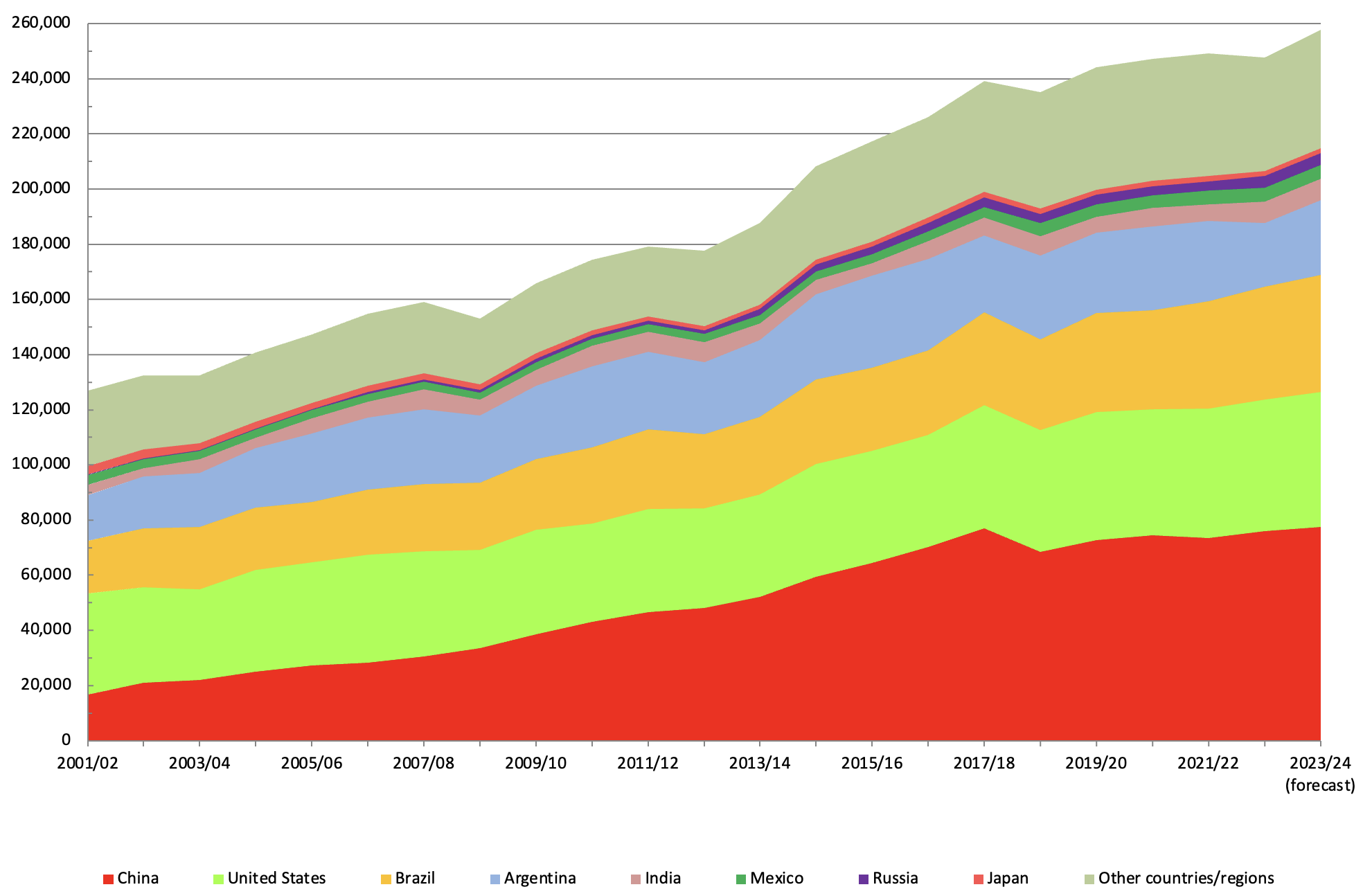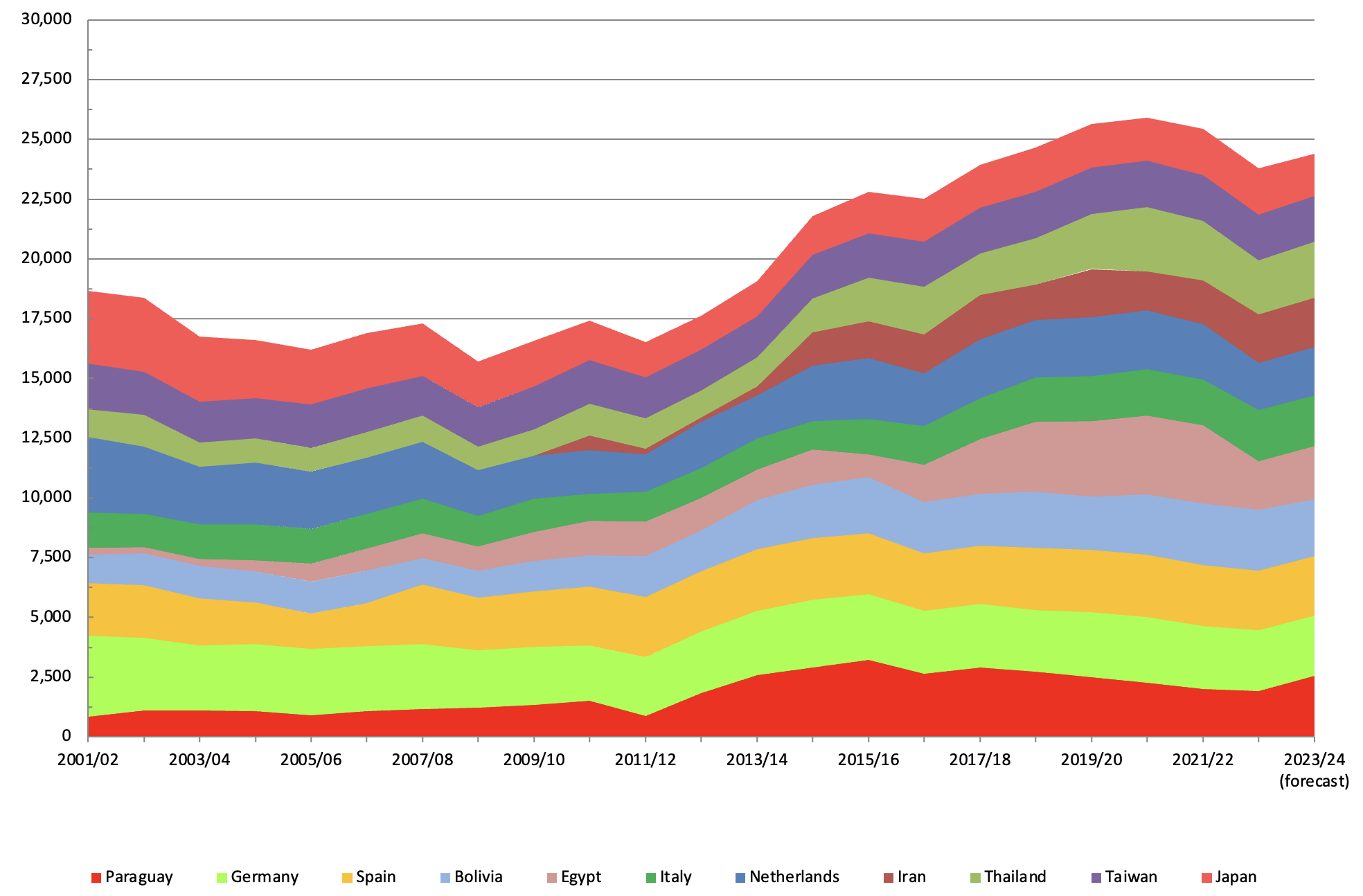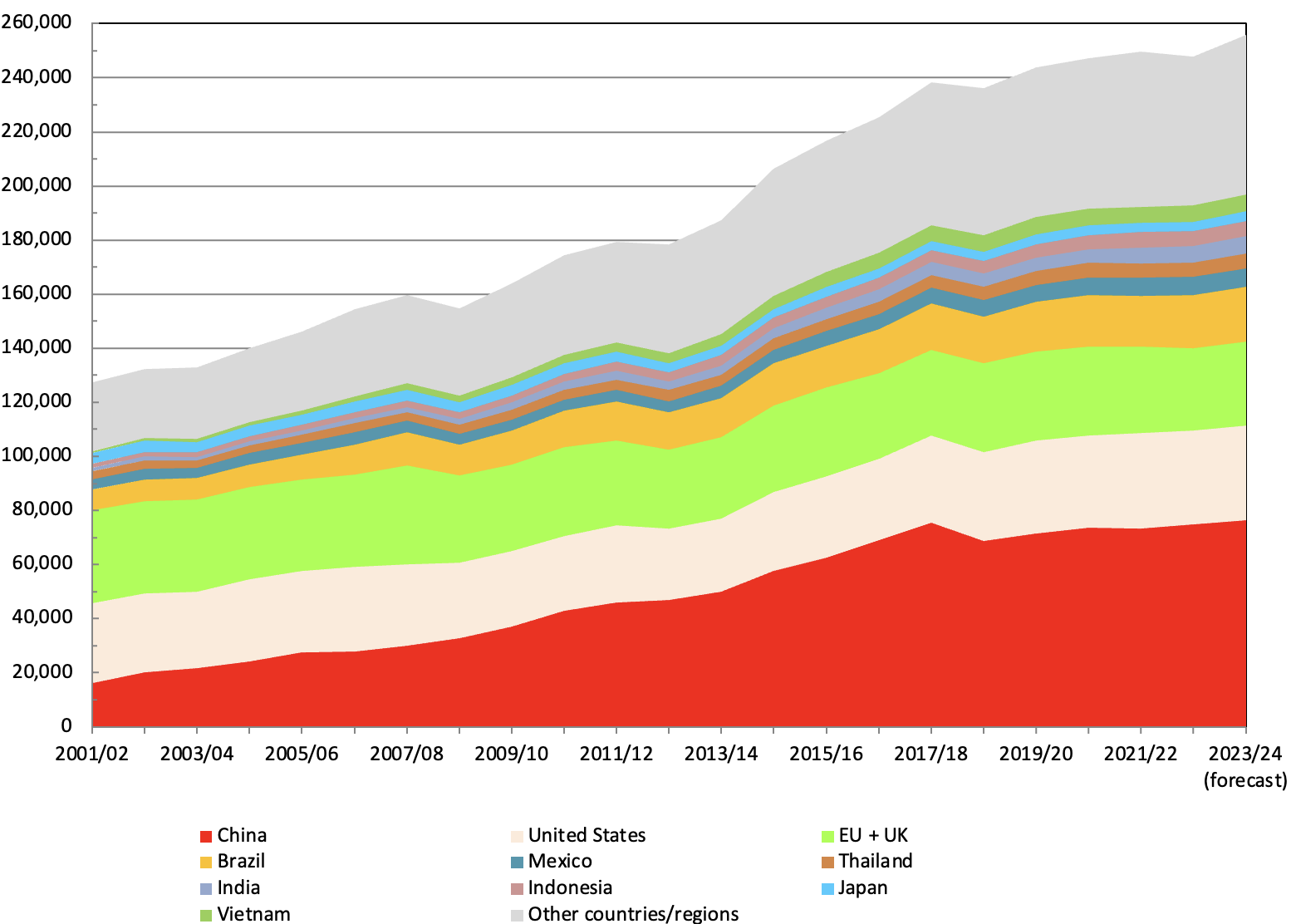Until now, we have discussed supply and demand for oilseeds and vegetable oil. However, the meal (strained lees) generated when harvesting oil is also a valuable product in the manufacturing industry. Soybeans, one of the most well-known oilseeds, have an oil content that is around 20%. When considering loss during the oil harvesting process, nearly 75% of soybeans are turned into meal. Even sesame seeds, which have the highest oil contents, are only at around 50%. In this respect, the oil-manufacturing actually produces more meal than it does oil. Meal contains quality proteins and sugars. As such, the effective use of meal is an extremely important issue in the manufacturing industry. In particular, soybean meal is the largest amount of meal produced and is a valuable product distributed throughout the world. The expression industry is commonly known as "crusher;" however, the soybean expression industry in many countries outside of Japan focuses on extracting oil in order to produce meal rather than treating oil harvesting as the main business. This section introduces soybean meal, which is considered to be the most important type of meal.
Soybean meal contains a large amount of quality protein and has been used in a variety of ways. In Japan, it was once (from the 1900s) heavily used as fertilizer for rice fields. Today, it is used in the following ways.
1) Livestock feed. After corn, soybean meal is the second most important material in blended livestock feed.
2) Vegetable protein foods. In Japan, soybean meal is used as an ingredient in soy ham, soy sausage, soy hamburger, soy fried chicken, etc.
3) Fermented food products. In Japan, soybean meal is used in soy sauce, etc.
Figure 12 shows the amount of soybean meal produced globally. The amount of soybean meal produced is proportional to the amount of soybean oil produced. Therefore, China, the United States, Brazil, and Argentina are major producers. These four countries produce slightly less than 80% of the world's total soybean meal.
Figure 12-a: Changes in soybean meal production amount by country
(countries with a production volume of over 4,000,000 tons + Japan)
(Unit: 1,000 tons)

Figure 12-b: Changes in soybean meal production amount by country
(countries with a production volume of around 2,000,000 tons + Japan)
(Unit: 1,000 tons)

Source: Same as Figure 1
Among these four major producers, the United States, Brazil, and Argentina are also major exporters of soybean meal. On the other hand, although China does some exporting, the major of soybean meal is consumed domestically.
The majority of demand for soybean meal is in the form of livestock feed. The amount of meal consumed is thought to increase concurrently with livestock production, particularly small to mid-sized livestock such as pigs and chickens. However, in China, although the amount of meat produced increased by 30%between 2001-2002 and 2017-2018, the amount of soybean meal consumed increased dramatically by 4.5 times during the same period. The consumption of soybean meal is also affected by changes in the mixture of livestock feed. Therefore, it is believed that major changes to the ratio of ingredients in livestock feed occurred in China during this period. Furthermore, due to the outbreak of African swine fever (ASF) in China from 2018 to 2019 and the decrease in the number of pigs being bred, soybean meal consumption decreased from 75 million tons in 2017-2018 to 69 million tons in 2018-2019. As ASF subsides, the consumption recovered to 71 million tons in 2019-2020 and has been on an upward trend. The consumption reached 75 million tons in 2022-2023 and is expected to increase to 76 million tons in 2024-2025.
Figure 13: Changes in soybean meal consumption amount by country
(Unit: 1,000 tons)

Source: Same as Figure 1




